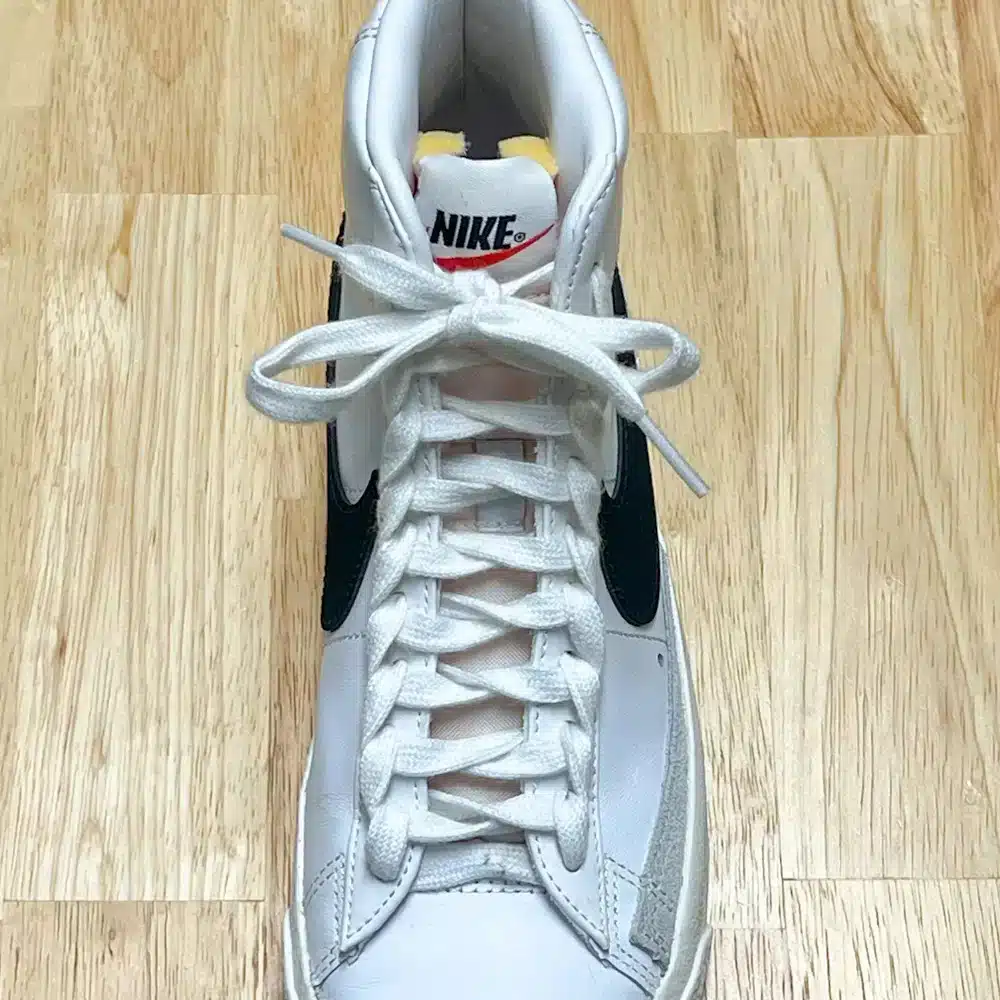
Bored with your sneakers but don’t want to buy a new pair? Try lacing your sneakers a different way!
Table of Contents

From everyday activities to pro sports, sneakers are everywhere.
Despite their ubiquity, you’ll likely only ever really see one or two different lacing methods.
However, your foot type, career, or even hobbies may change the ways you want to lace up your shoes. The way you lace your shoes can help to eliminate hotspots, provide better support, or even just help give your kicks a new look.
Since sneakers are inherently casual, you have a bit more freedom to try new and unusual lacing patterns than you do with more formal footwear, such as dress shoes.
The lacing methods I cover in this article will work for:
These methods encompass the majority of both casual and athletic applications. Several of these styles are known to work for both!
Try these variations out to take your shoe game to the next level.
If you are in need of a pattern to use with all your sneakers , look no further.
Standard lacing refers to the classic crisscross pattern often found on your shoes right out of the box. For a better look and tighter fit, take this opportunity to re-lace and refresh those old sneakers .
Step 1: Push the ends of the lace into the outside of the bottom pair of eyelets. Ensure that you have equal lace on either side before continuing the pattern.
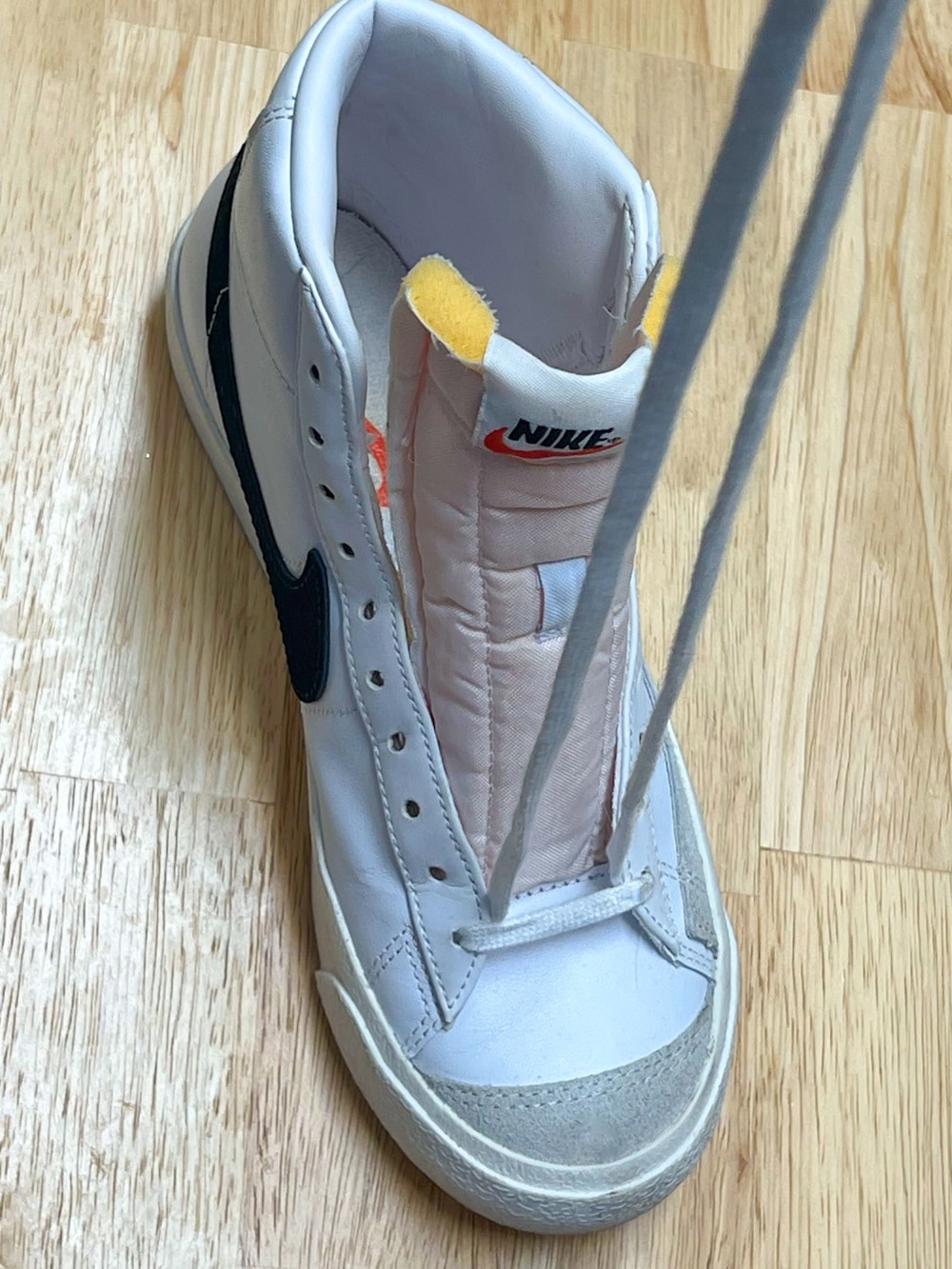
Step 2: Begin lacing the shoe diagonally, pulling the laces through the inside of the eyelet before proceeding to the next set of eyelets.
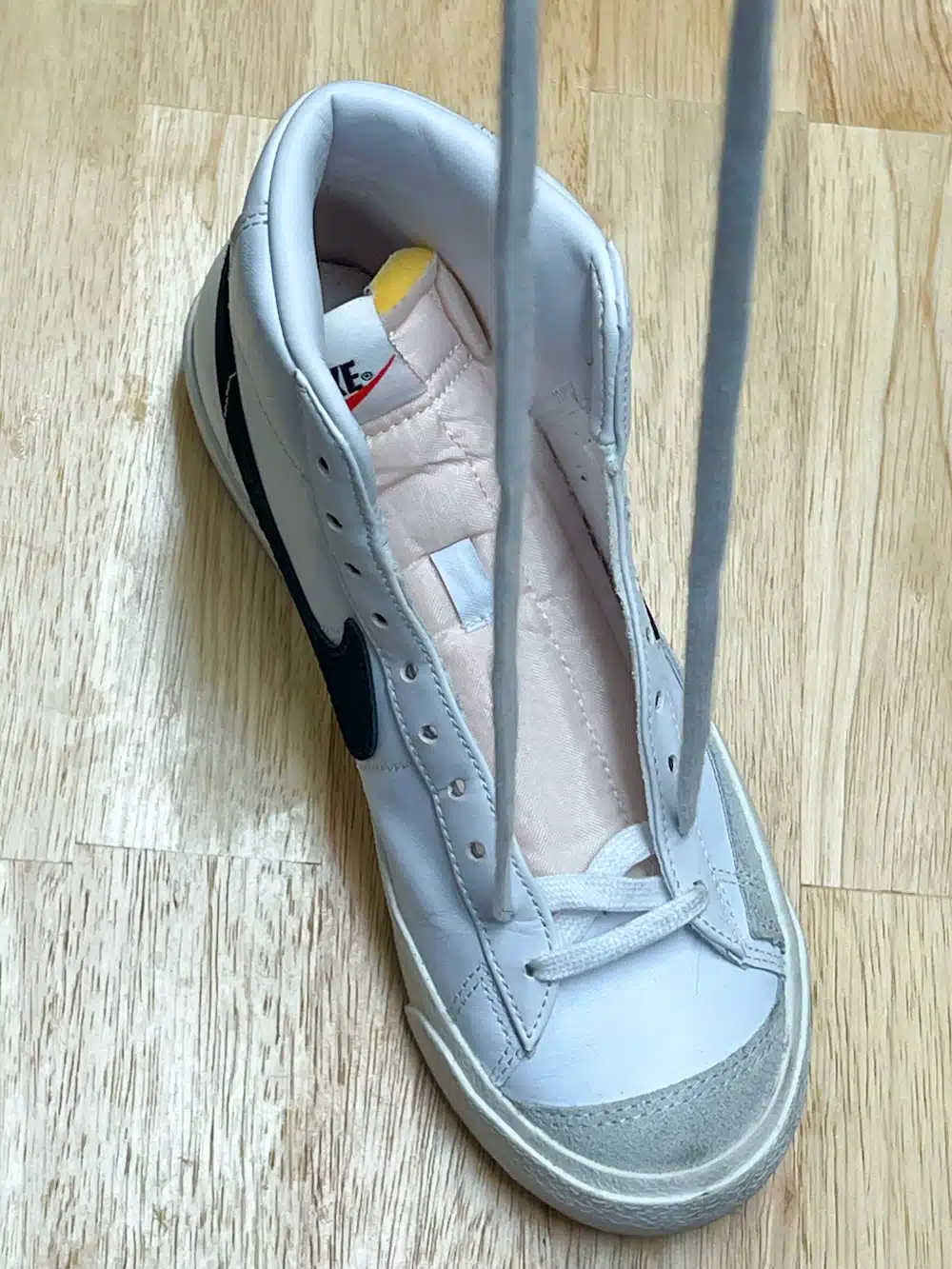
Each time the laces are pulled from the inside of the eyelet to create the crisscross pattern. This also keeps the lace pattern uniform; the laces should always be passing over the eyelet it was pulled through.
After repeating step 2 until completion. You should be left with a finished product that looks like this.
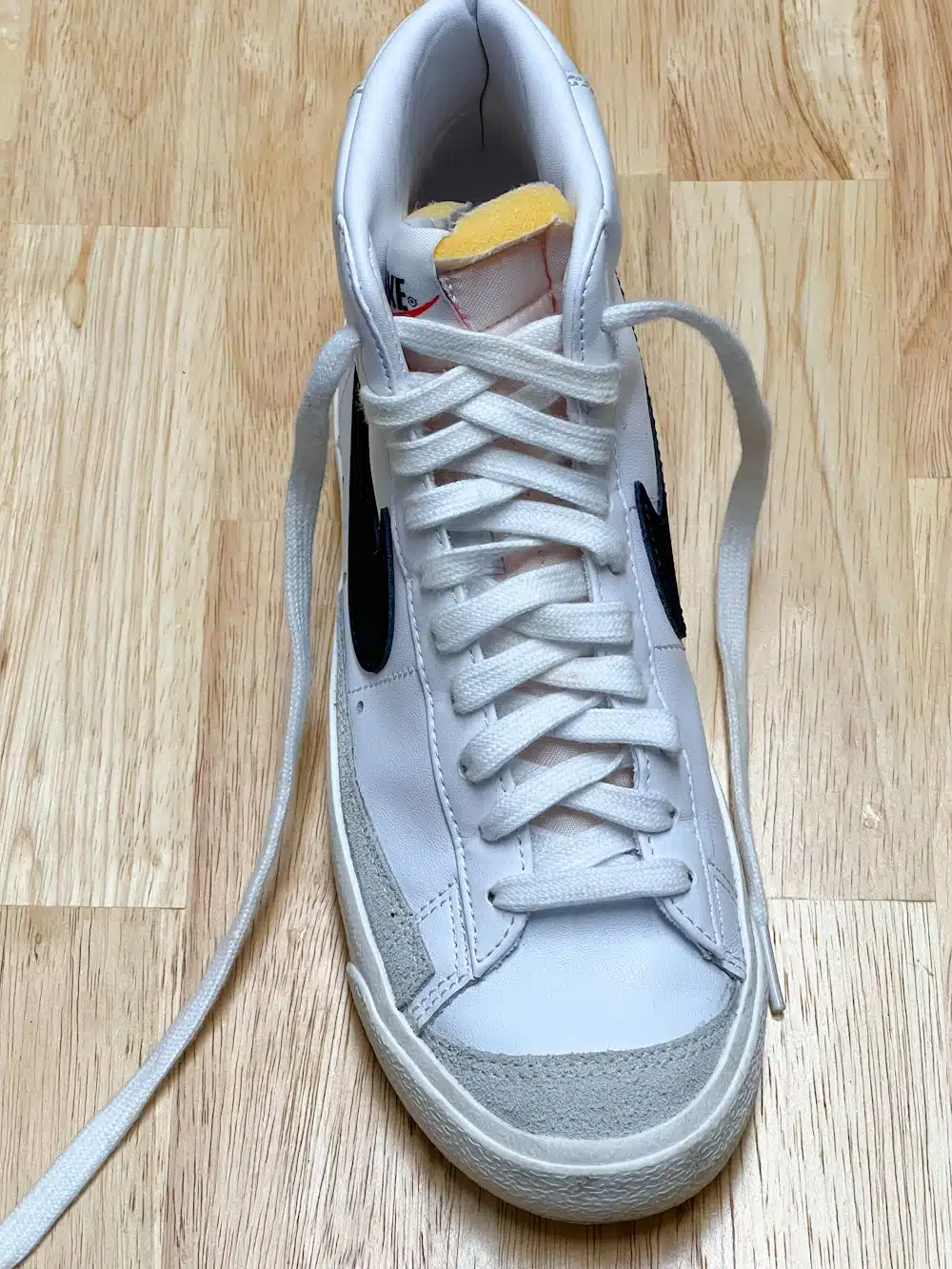
This pattern serves as a great baseline and introduction to other methods of lacing to come. When in doubt about what pattern to select, you will always be able to fall back on ol’ reliable, standard lacing.
Whether for back-to-school or grocery shopping, these patterns offer fun and stylish alternatives to spice up the most mundane Monday morning.
For this genre of lacing styles, I recommend loop-back lacing for high-tops, bar lacing for canvas sneakers and skate shoes, and loose lacing for all you sneakerheads wearing basketball shoes off the court.
I love the look of this pattern on high-top sneakers , given that this style of footwear has more eyelets for the pattern to appear more prominent on foot.
Step 1: Lace the bottom pair of eyelets from the inside, pulling the lace ends out of the eyelets.
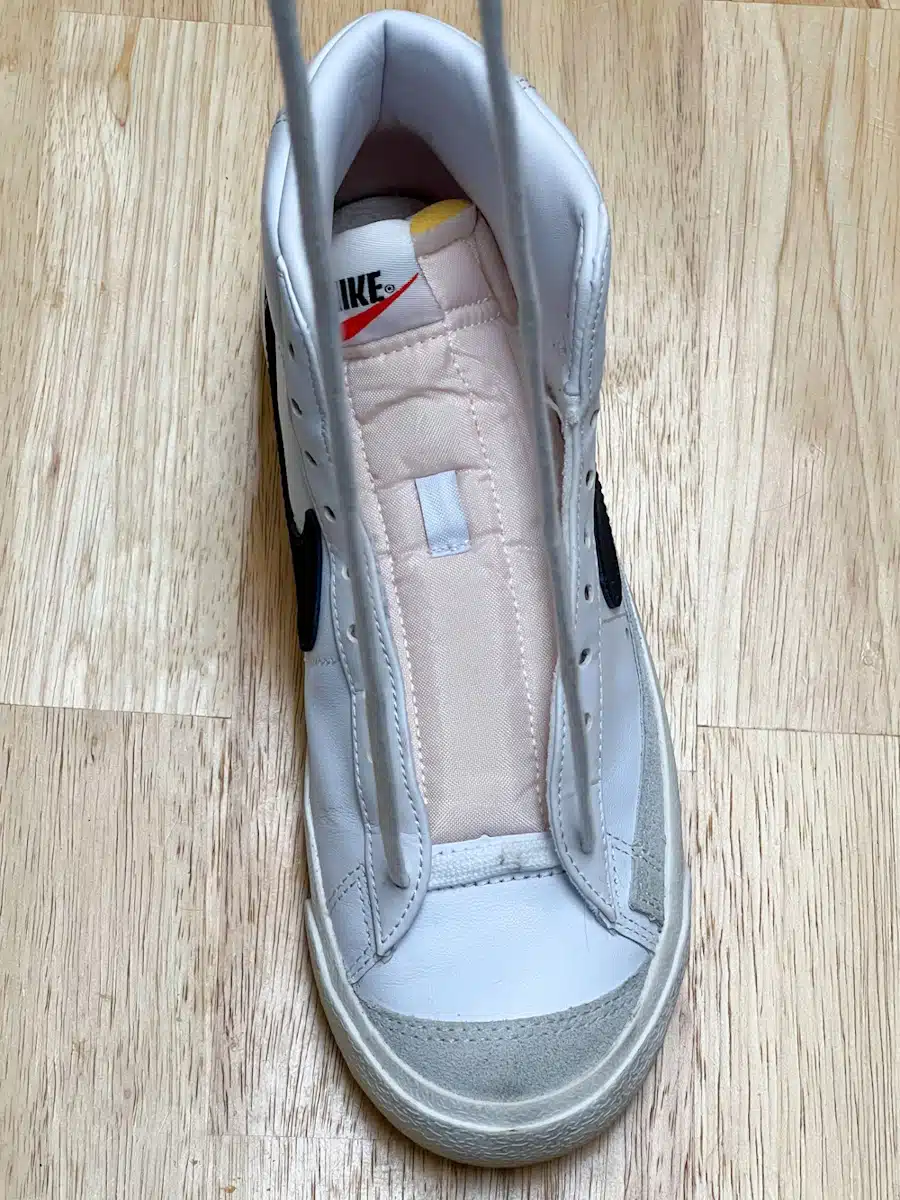
Step 2: Instead of lacing across the tongue, begin by lacing one side vertically. Pull the lace end of one side through the bottom of the eyelet directly above it.
Do not pull it all the way through, but rather leave enough space to create a loop.
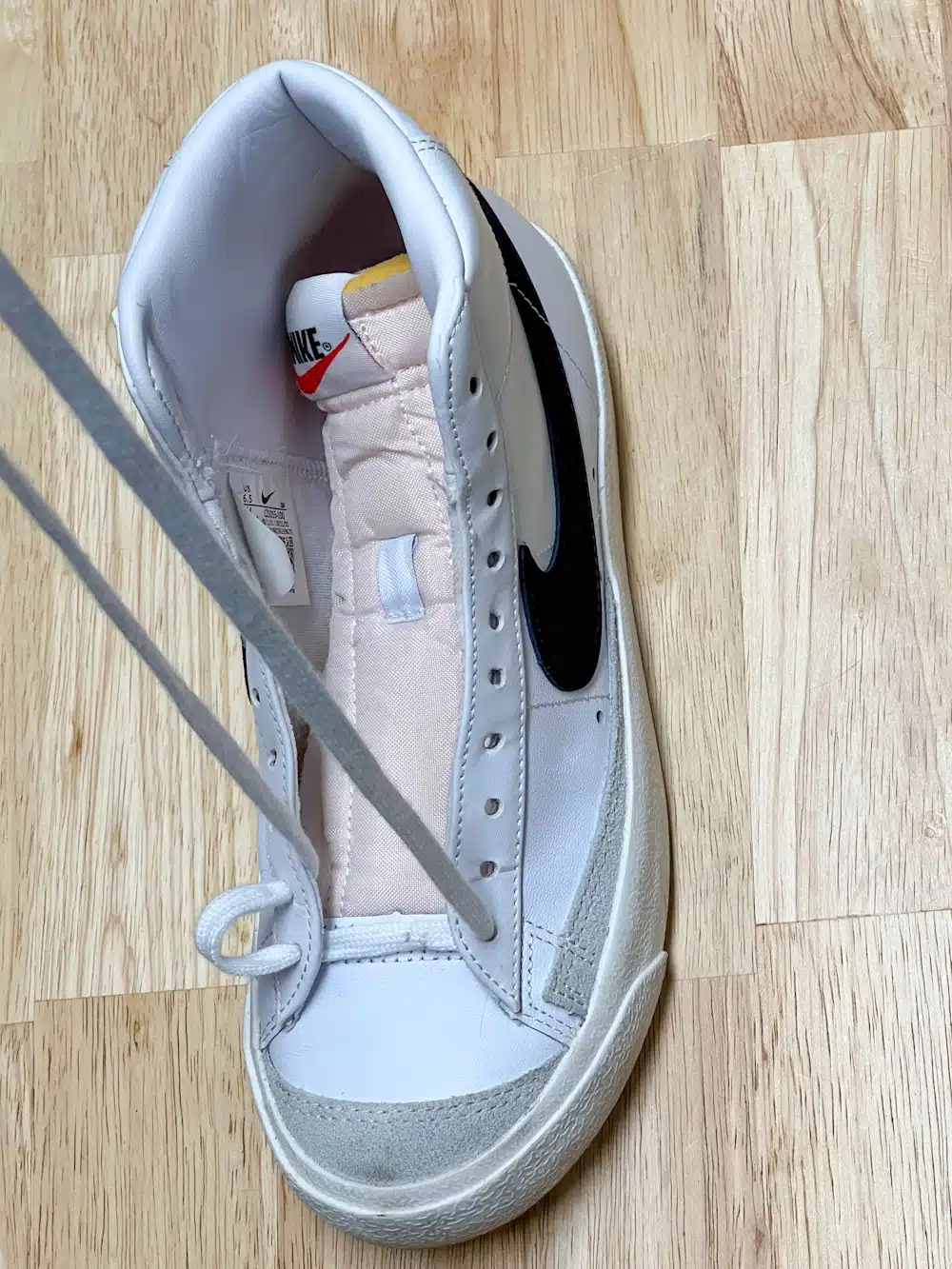
Step 3: With the other side, lace vertically similar to the step prior, only now, before pulling the lace through the bottom of the next eyelet, first lace it through the loop created in step 2. This should create an appearance that looks like this.
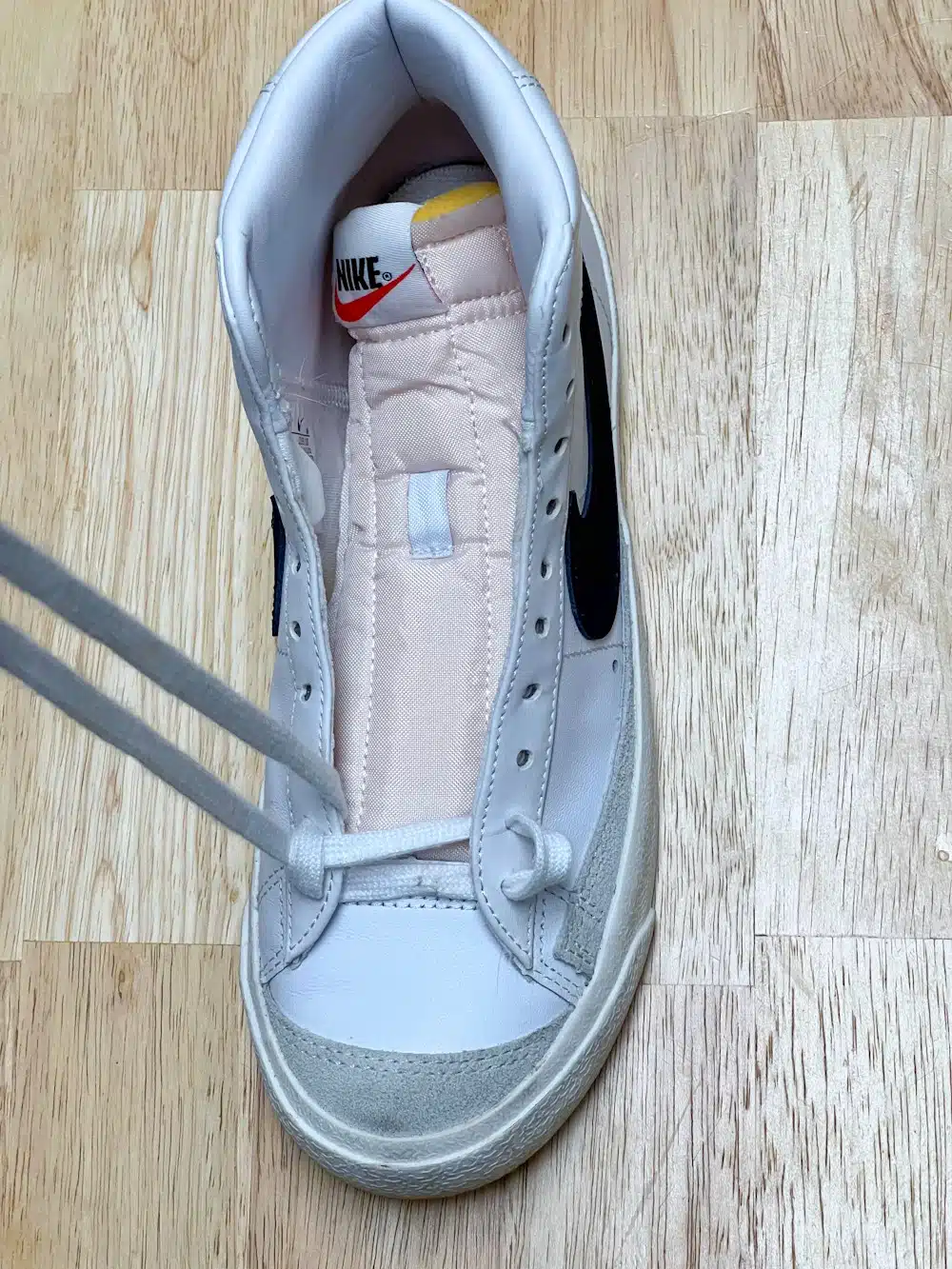
Step 4: Repeat this process until completion. The last pair of eyelets will not have a loop but simply be pulled through the bottom of the last eyelet for tying.
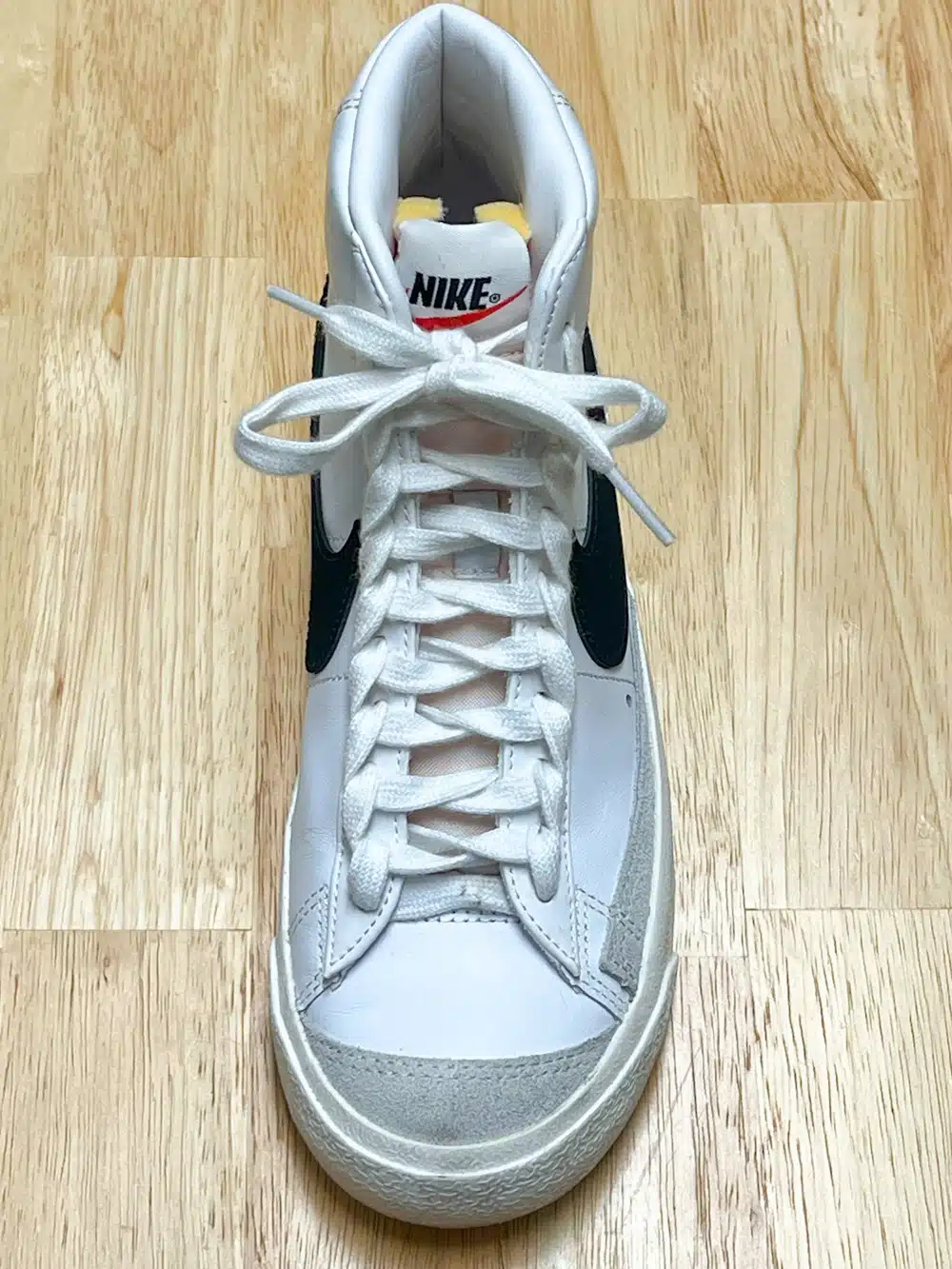
This distinctive look is great for these high-top shoes. Try out contrasting shoelaces for loop-back lacing to really stand out!
One of the most distinctive patterns of lacing shoes like Chucks or Vans, other than standard lacing, is bar lacing. This unique style gives the appearance, as the name suggests, of horizontal bars that create a very comfortable and flexible fit.
Step 1: Lace the bottom pair of eyelets pushing the ends through the top of those eyelets.
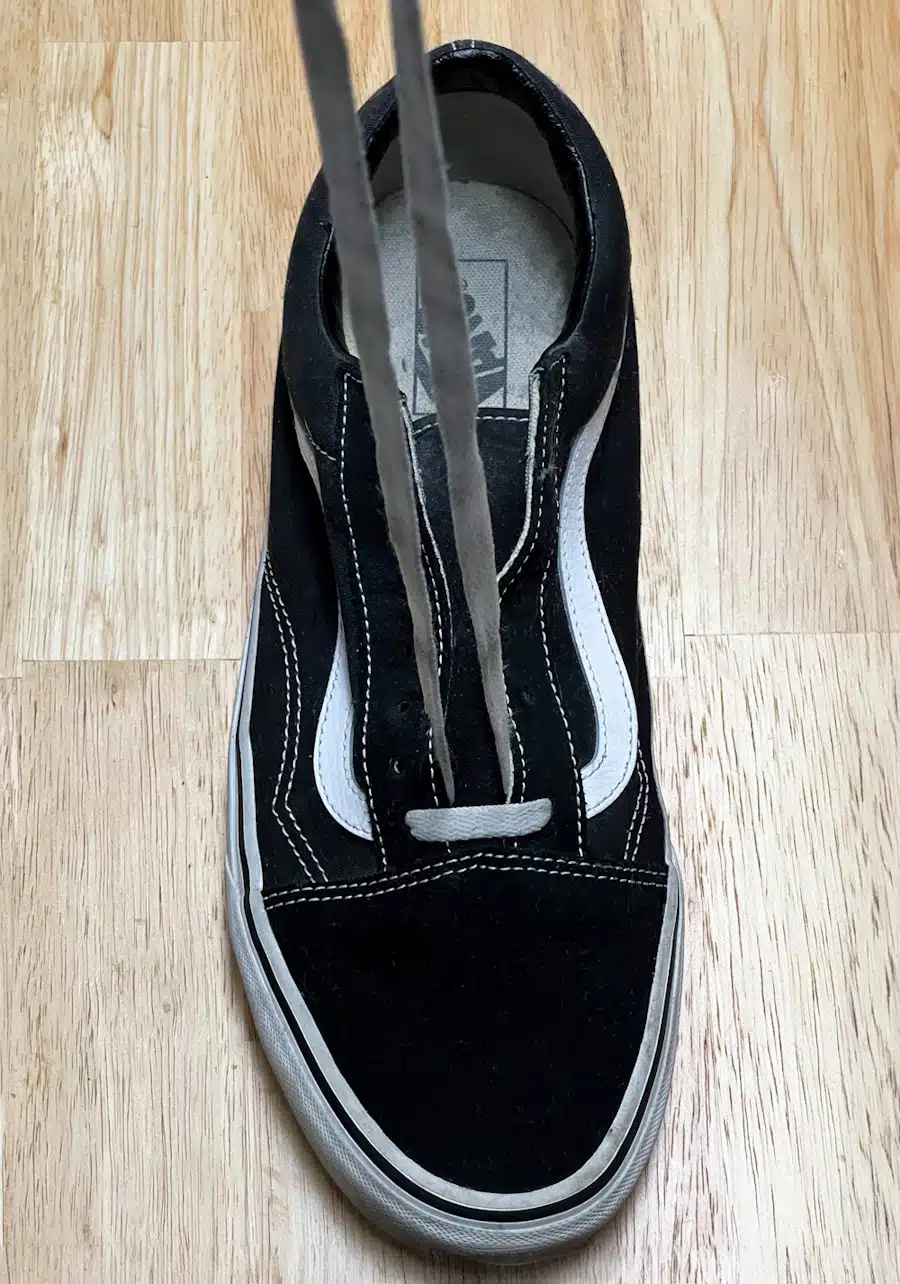
Step 2: On one side, lace directly through the bottom of the eyelet directly above it before lacing horizontally through the top of the eyelet parallel.
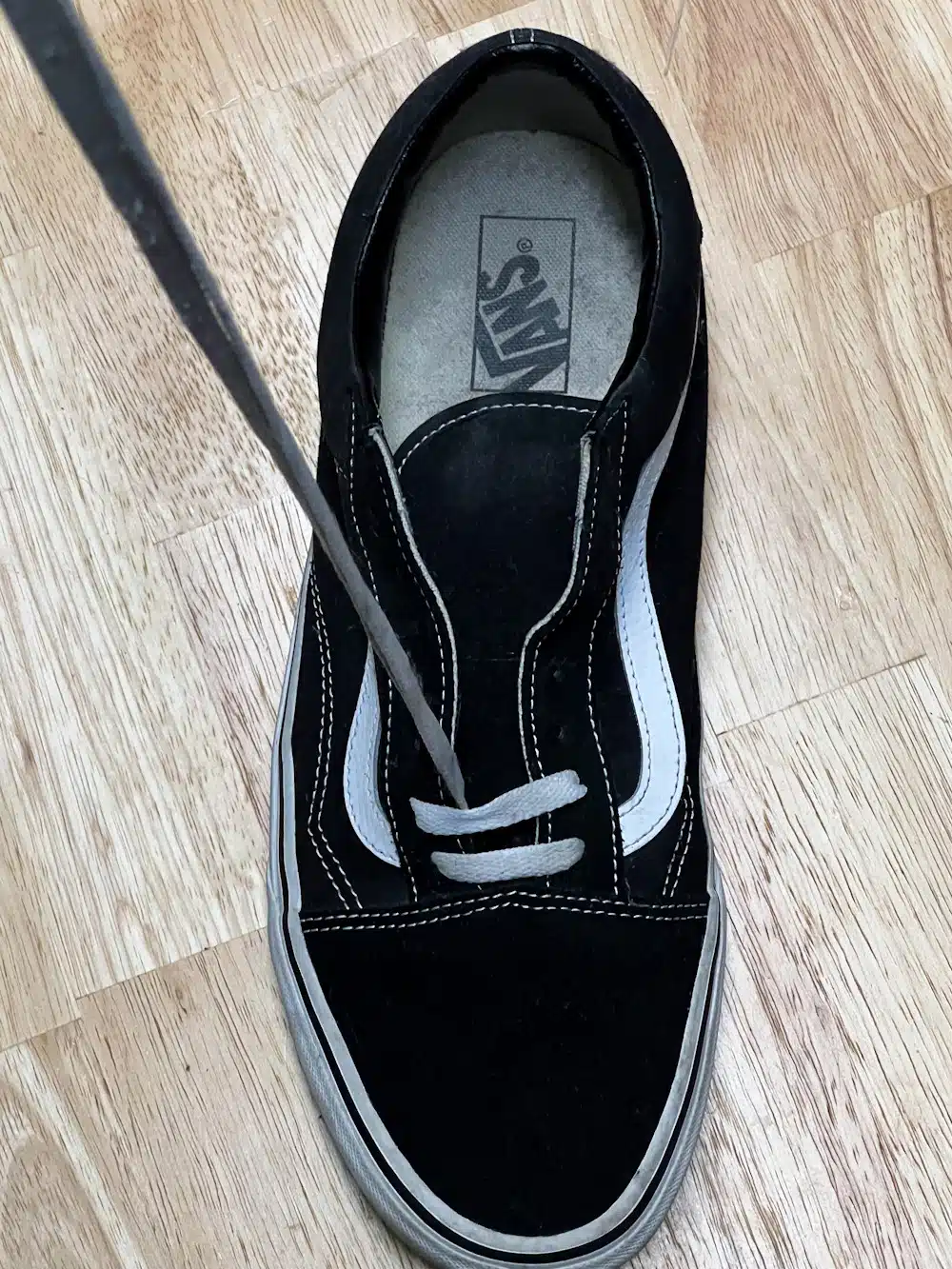
Step 3: On the other side, lace vertically, now skipping the eyelet directly above since it is filled from the previous step. Pull the lace through the bottom of the open eyelet and lace across the tongue to its eyelet pair.
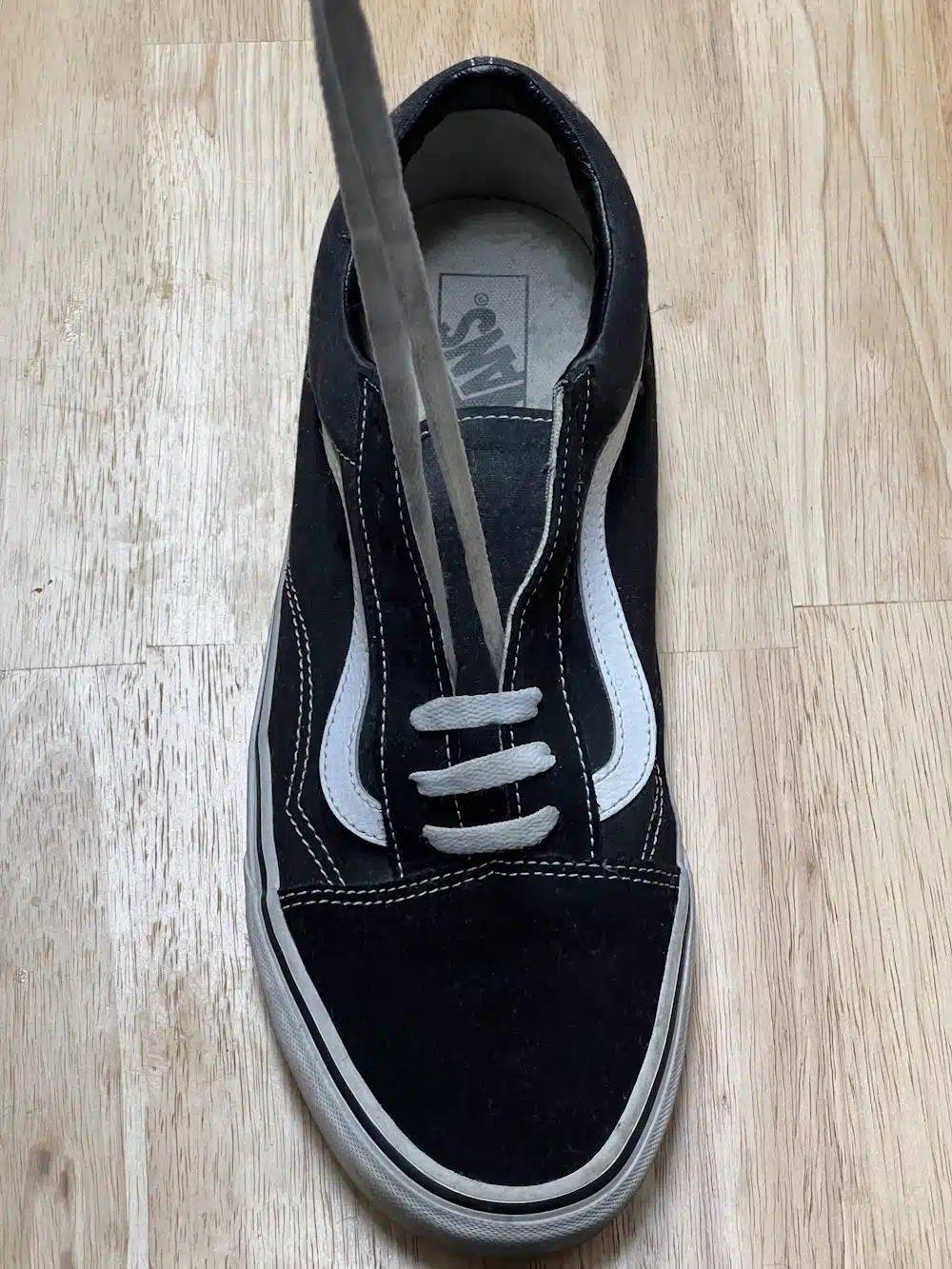
Step 4: Repeat step 3 until completion. The final pair of eyelets should have both lace ends protruding from the bottom of the eyelet for tying and tightening.
For an odd number of eyelet pairs, you will need to lace one end with a diagonal just before the final pair of eyelets to achieve this effect.
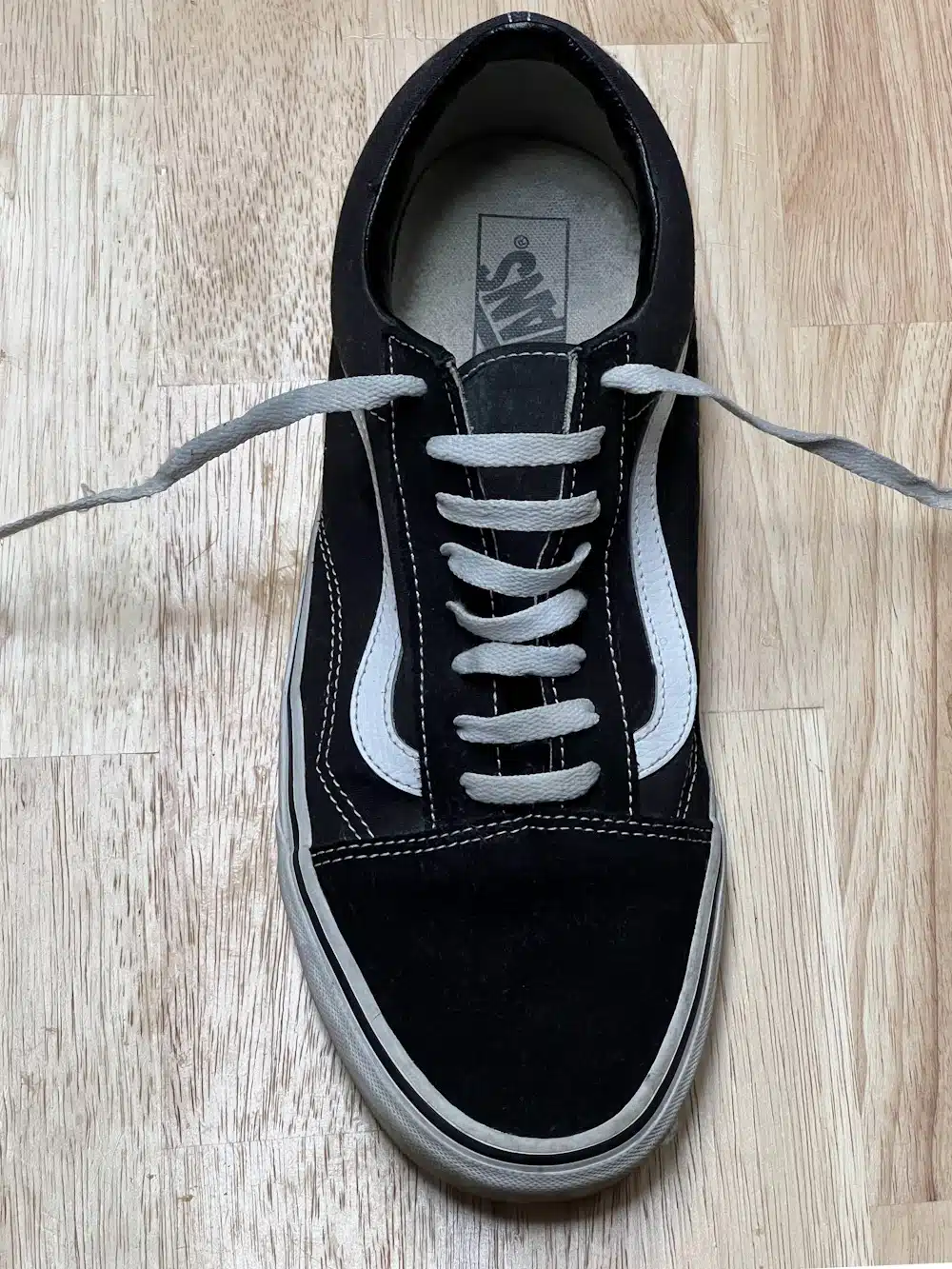
For skate shoes especially, to keep excess lace in check, you can tie a knot near the end of the lace. Do this after pulling it through the eyelet to allow an untied, yet secured, shoe that looks great with bar lacing but is also very practical for skating.
This style is less of a pattern and more of what we just described about skate shoes.
Loose lacing refers to any time the shoe is not tied, but rather shortening the lace with longer patterns that are flexible and leave little shoelace for the final pair of eyelets.
Tying a knot to hold the leftover lace ends in place is optional.
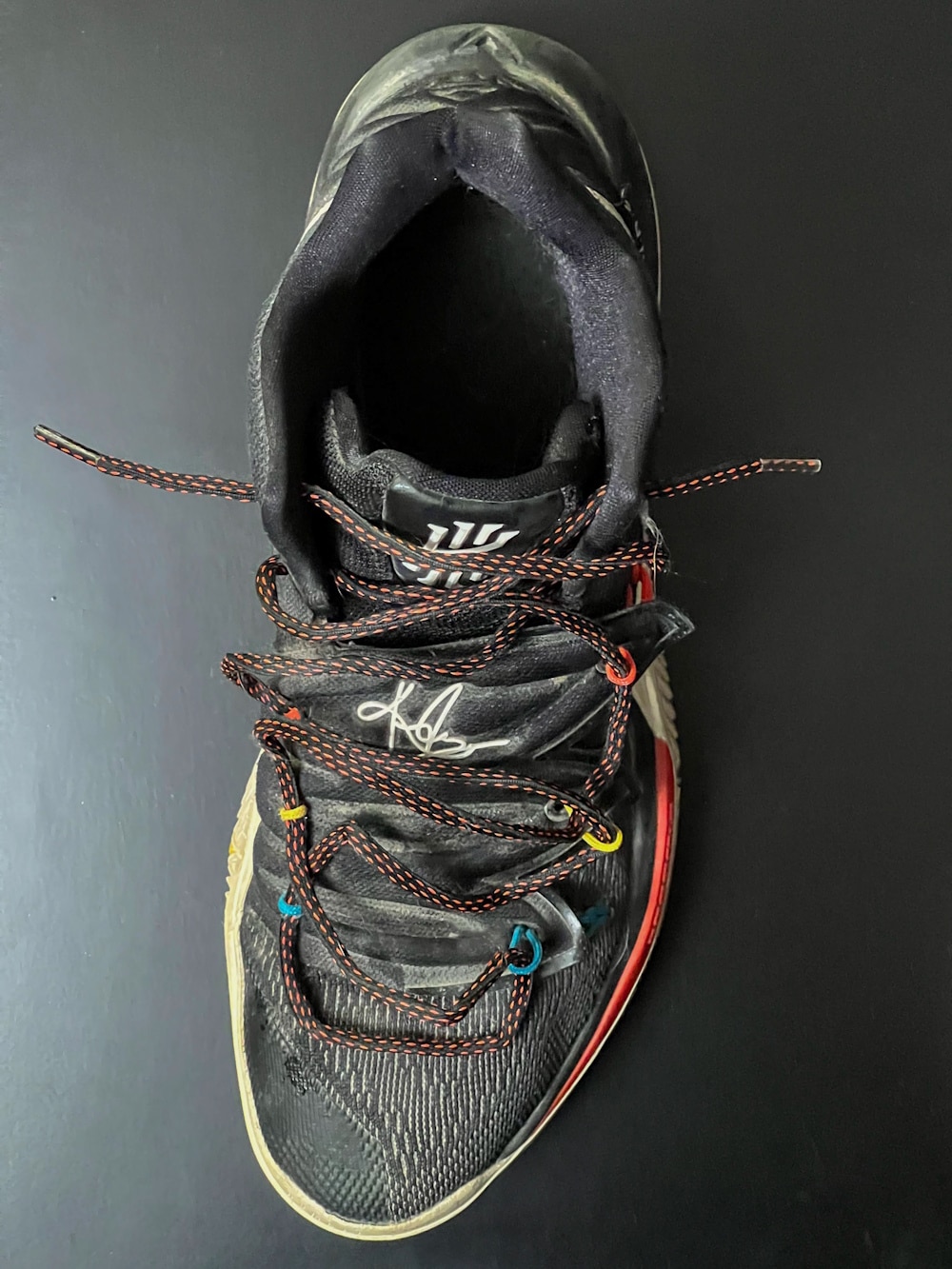
You can style loose lacing using any of the above patterns. This style is great for shoes like Retro Jordans or other casually worn basketball shoes.
Many of these lacing styles depend on the individual, in that they are designed to aid with specific problems the athlete themself note.
For example, a runner dealing with heel slippage may elect to use a pattern called the runner’s loop. To loosen up the middle, the athlete will elect to use gap lacing, focusing on loosening around the affected area.
Another, suffering from toe pain will use “shoe shop” lacing, also known as single Helix lacing.
Also known as “heel lock” lacing, due to the effect of keeping the heel in place, the runner’s loop is a simple variation of standard lacing. To effectively create this loop, lace the shoe normally until the second to last pair of eyelets.
Step 1: Many running shoes actually space the last two pairs of eyelets differently than the rest with this pattern in mind.
For the second to last pair of eyelets, lace diagonally and from the bottom of the eyelets.
Step 2: Instead of finishing with another diagonal (which would just be standard lacing), push the lace ends through the eyelet directly above the last. This should create a small loop.
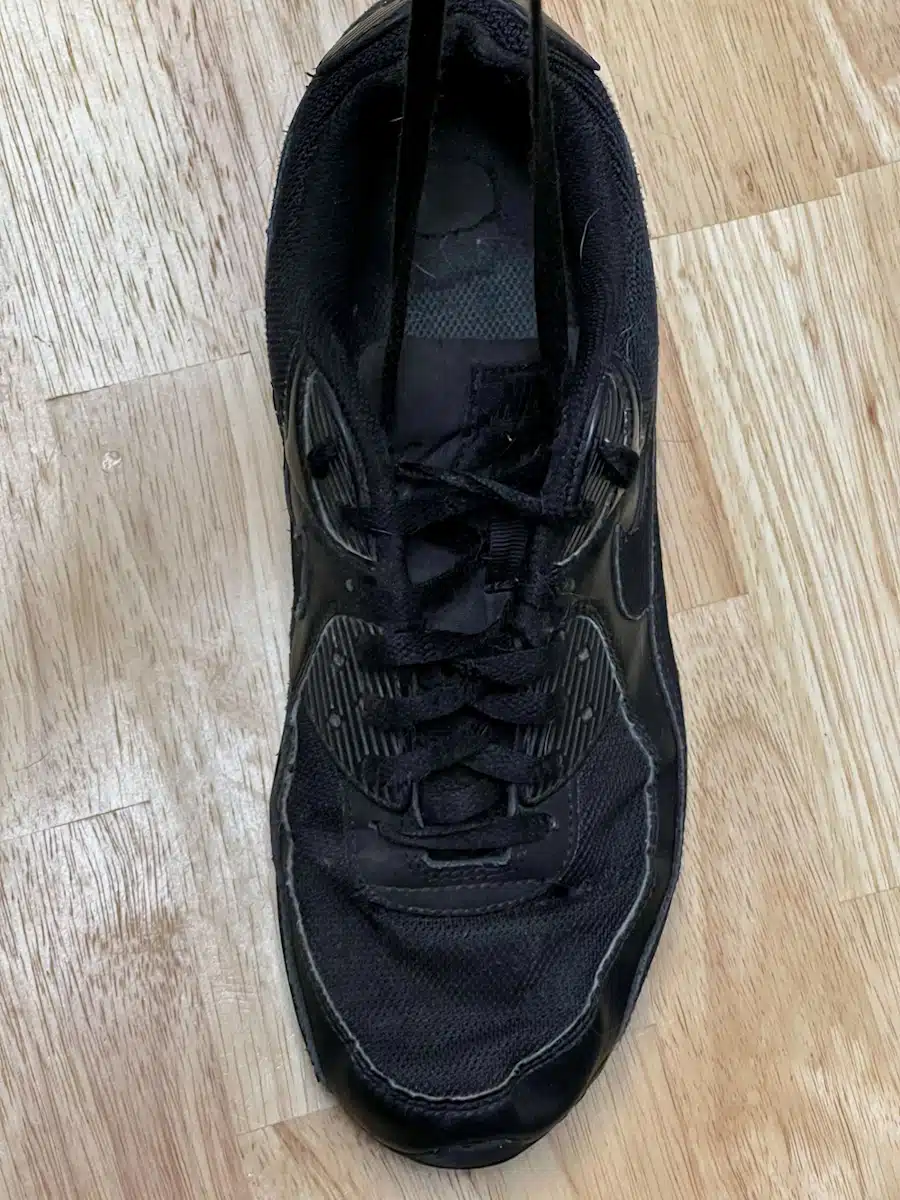
Step 3: Pull the lace ends horizontally through the loop created in step 2.
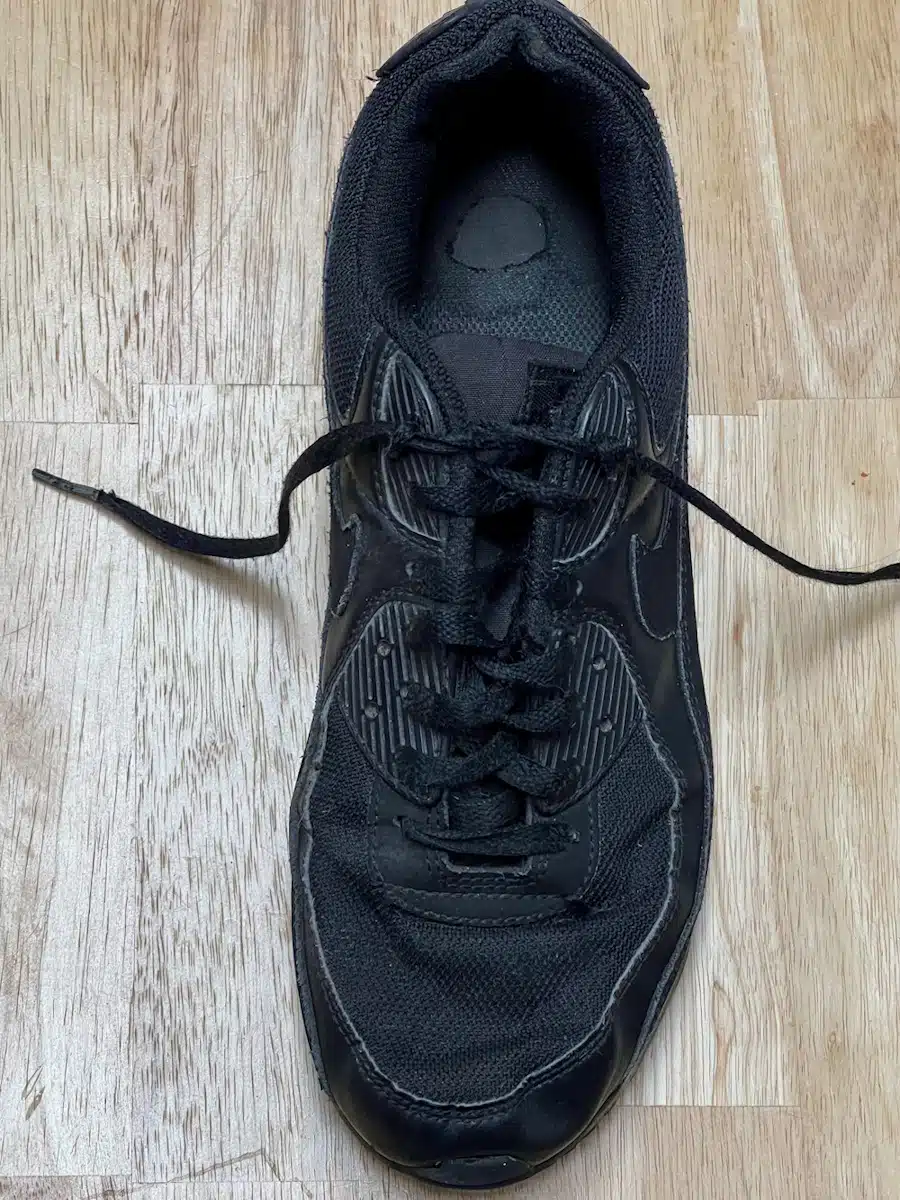
It will appear like a tighter crisscross than the rest and will allow you to tighten your shoe firmly against your heel.
This pattern is awesome for running shoes and trainers alike, or anytime you find your heel slipping out of your shoe.
Similar to the runner’s loop, this pattern is a variation of standard lacing that allows you to alleviate specific pain points. Gap lacing will allow you to free the top of your foot — great for people with high arches or people who experience uncomfortable pressure during activity.
The first step before the actual lacing of gap lacing consists of identifying where along your foot you experience the most discomfort and the corresponding space along the tongue.
Step 1: Start by standard lacing your shoe until you reach the area causing pain or irritation.
Step 2: To create the gap that will alleviate pressure, simply pause the diagonals and lace one set of eyelets vertically before returning to the same, diagonal pattern of standard lacing.
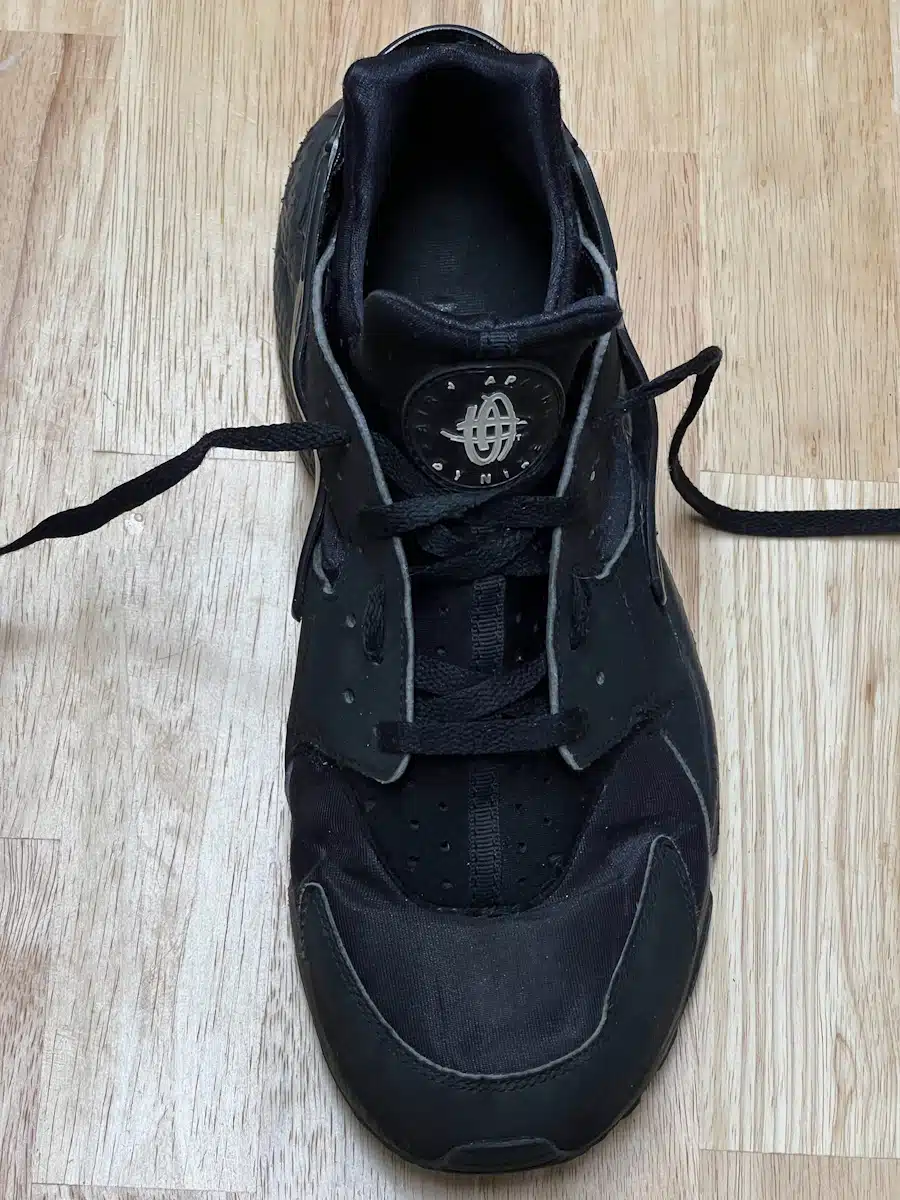
The result should look like this and should feel looser in that particular area only. This is great for both running shoes and gym shoes.
We have now deviated from variations of standard lacing and will now introduce a brand new technique that is perfect for alleviating pain and pressure on the toes.
Runners, use this to avoid black toenails.
Step 1: Begin by pushing the lace ends through the top of the bottom pair of eyelets.
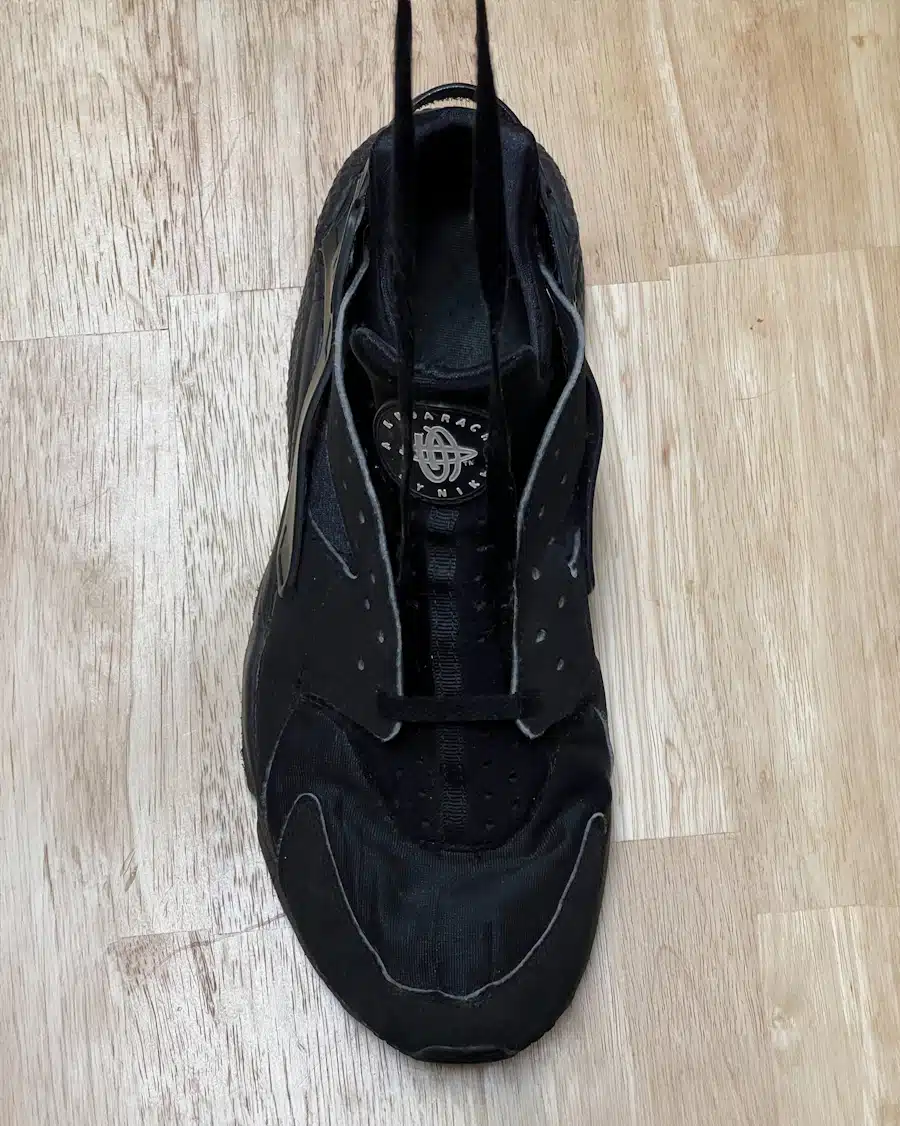
Step 2: On one side, lace a long diagonal reaching from the bottom eyelet to the inside of the opposite top eyelet.
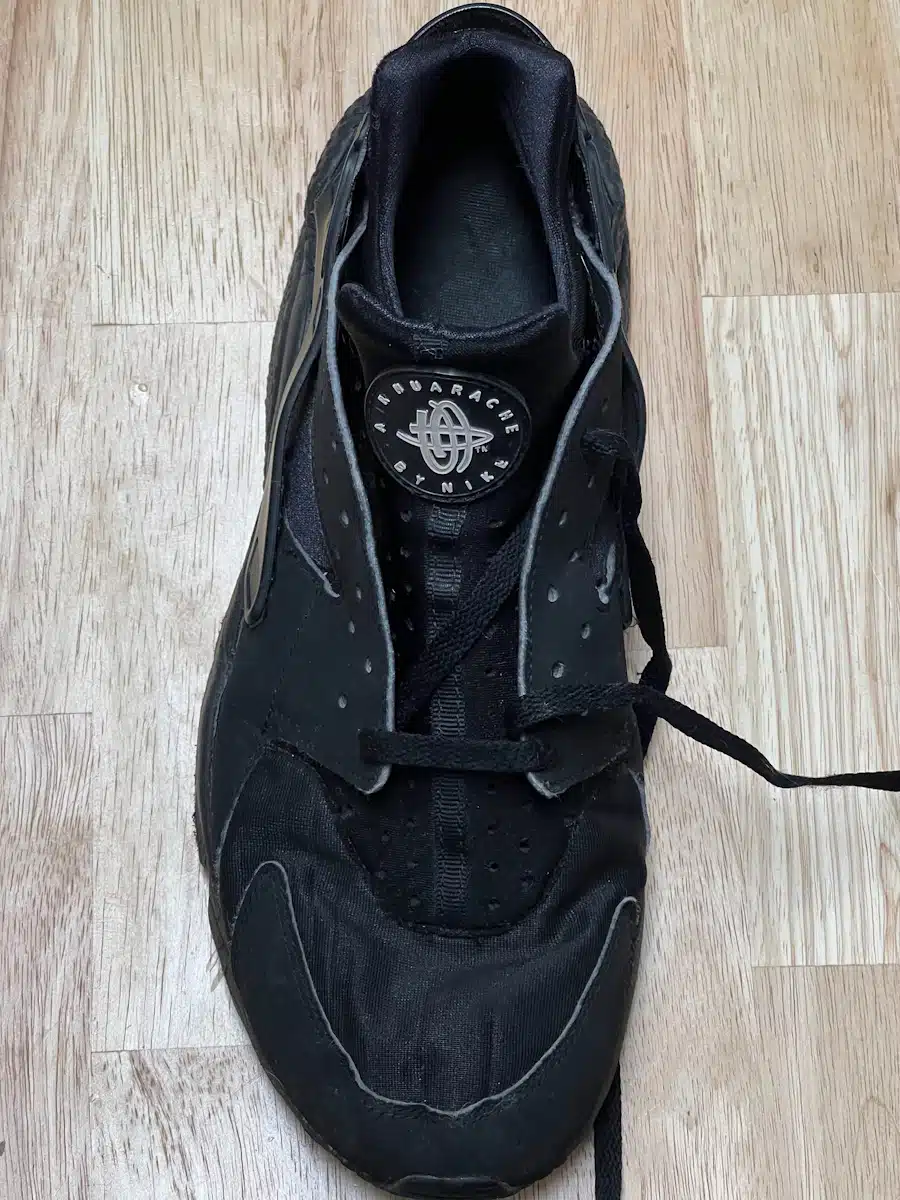
Step 3: To fill the rest of the eyelets, lace the other end diagonally across to the next available eyelet. Lace by pulling the end through the bottom of this eyelet.
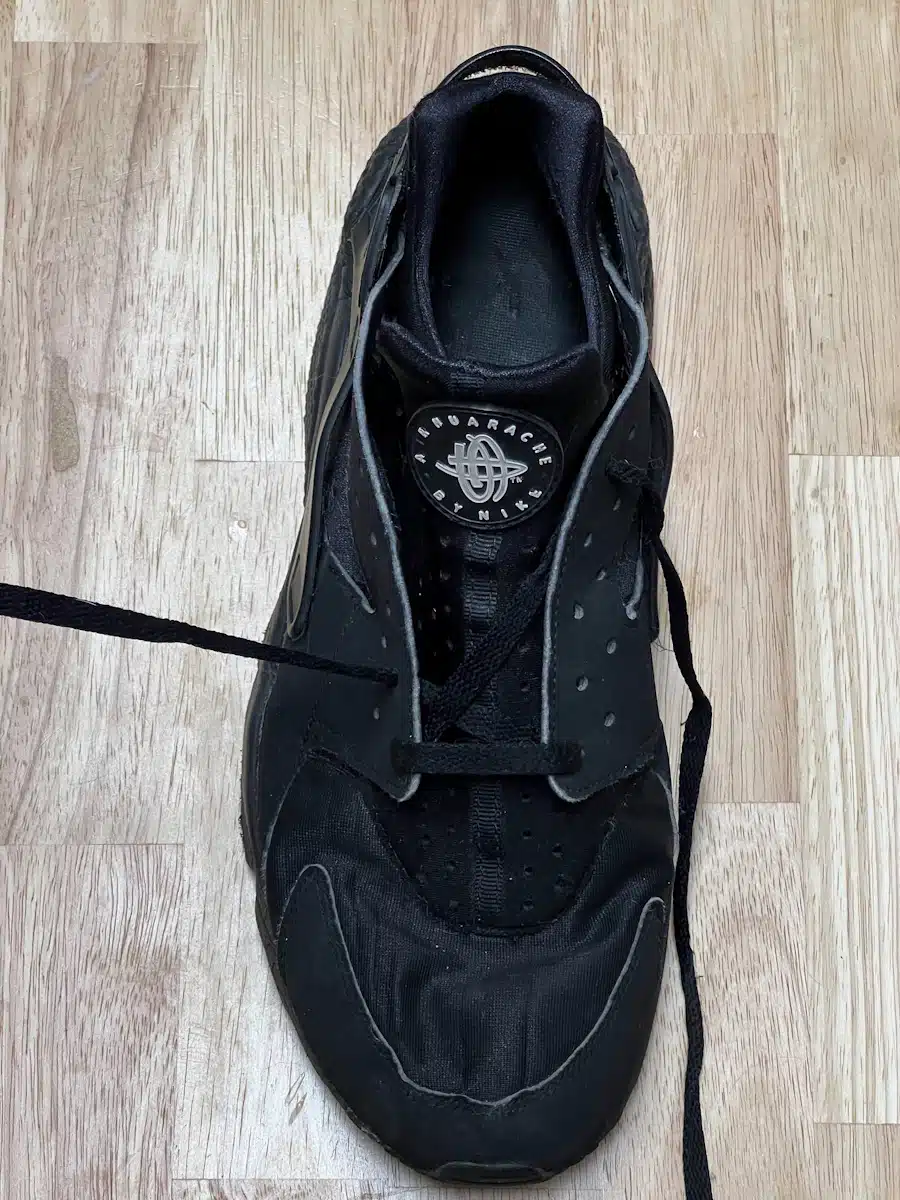
Step 4: Lace horizontally, over the long diagonal, to the eyelet parallel to the one laced in step 3.
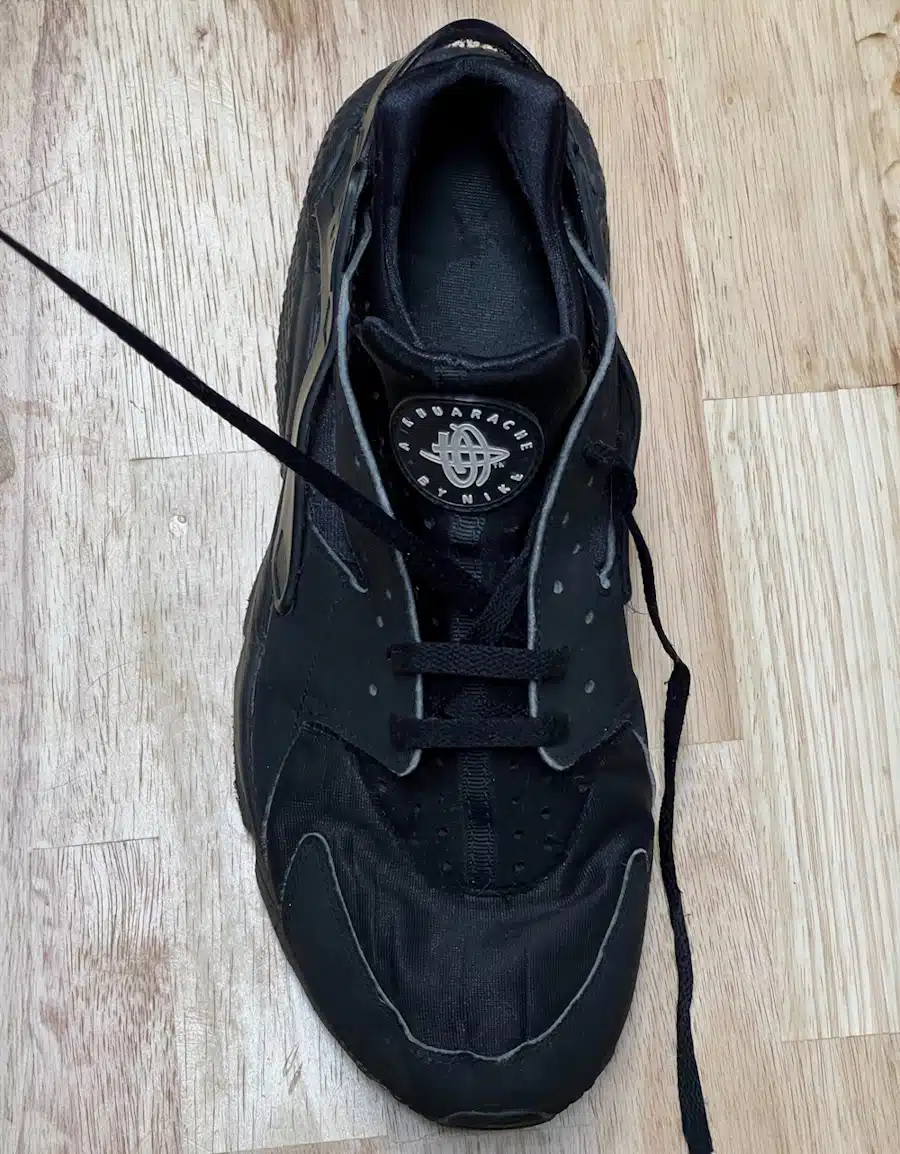
Step 5: Continue by lacing diagonally, under the long diagonal, and then horizontally, over the long diagonal. The final lace should be diagonal with the end exiting the eyelet from the bottom.
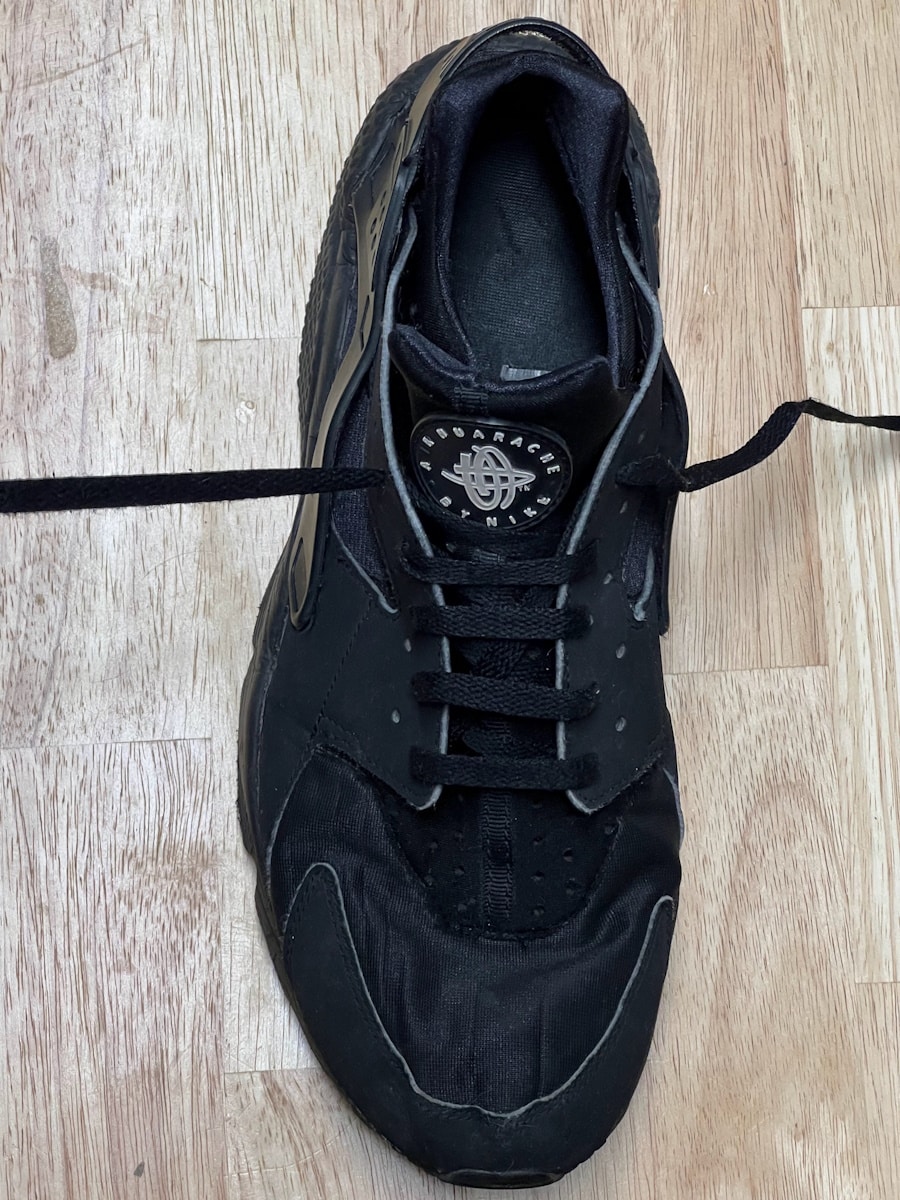
This style of lacing was previously factory standard! For best results, alternate the direction of the long diagonal from one shoe to the other for a more symmetrical look.
Here are answers to common sneaker-lacing questions:
Most sneakers will use some type of flat laces. Flat laces are easier to tie and hold their knots longer.
Running shoes are designed with running in mind. Trainers, on the other hand, are all-around athletic shoes used in a variety of scenarios. These could include use in the gym or outdoor recreation.
Lacing your sneakers can be just as practical as it is stylish. Whether you are seeking a more comfortable fit or a style you can show off, refer to this guide when choosing!
What lacing method did we miss? Leave your recommendations in the comments!


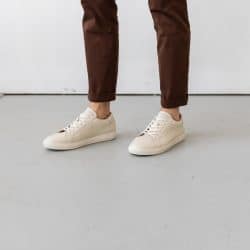
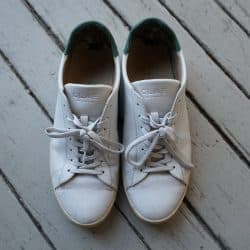
TMM's Senior Editor, Ryan Hallstrom is from Horseheads, NY, the only town in America named in honor of military packhorses. When he’s not writing about menswear, Ryan enjoys reading, whittling, running, and perfecting his penmanship.
Background: In 2021, Ryan graduated from Brigham Young University where he majored in American Studies and Russian. Before completing his schooling, he had a wide range of job titles including finish carpenter, usher, elevator operator (yes, that’s a real job), landscaper, tour guide, and more.
In January 2022, Ryan began working full-time as The Modest Man’s Senior Editor. In this role, he not only edits all articles prior to publication but also is a frequent contributor to the blog. He enjoys crafting in-depth product reviews (often testing items in extreme environments), helpful self-improvement articles, and detailed clothing guides.
His interest in men’s style stems from the examples of men in his family:
“Growing up, a lot of the men I looked up to dressed well. My dad is always clean-shaven and makes sure that he looks presentable before heading out the door, and my grandfather, who owned and operated a dairy farm, usually wore work pants with a sharp crease and a button-up work shirt.”
However, it wasn’t until the end of high school that Ryan began to care about how he looked. Gradually, over the next few years, he started to dress better and learn about style. “Finding clothes that fit helped me to become more confident. I find that when I try to dress well, I feel better.”
Expertise: Ryan has loved writing since an early age, and in college began contributing to and editing for university publications. After college, he began freelance writing and editing. He’s written from blogs and magazines such as Real Men Real Style, Life in the Finger Lakes, and Gentleman Within.
An avid traveler who spends plenty of time outdoors, Ryan appreciates clothes, footwear and accessories that can take a beating. His reviews often include long-term, thorough testing in extreme weather conditions.
Ryan has also spent more time in a suit and tie than most guys, so he's well qualified to write about classic menswear, business casual and formalwear.